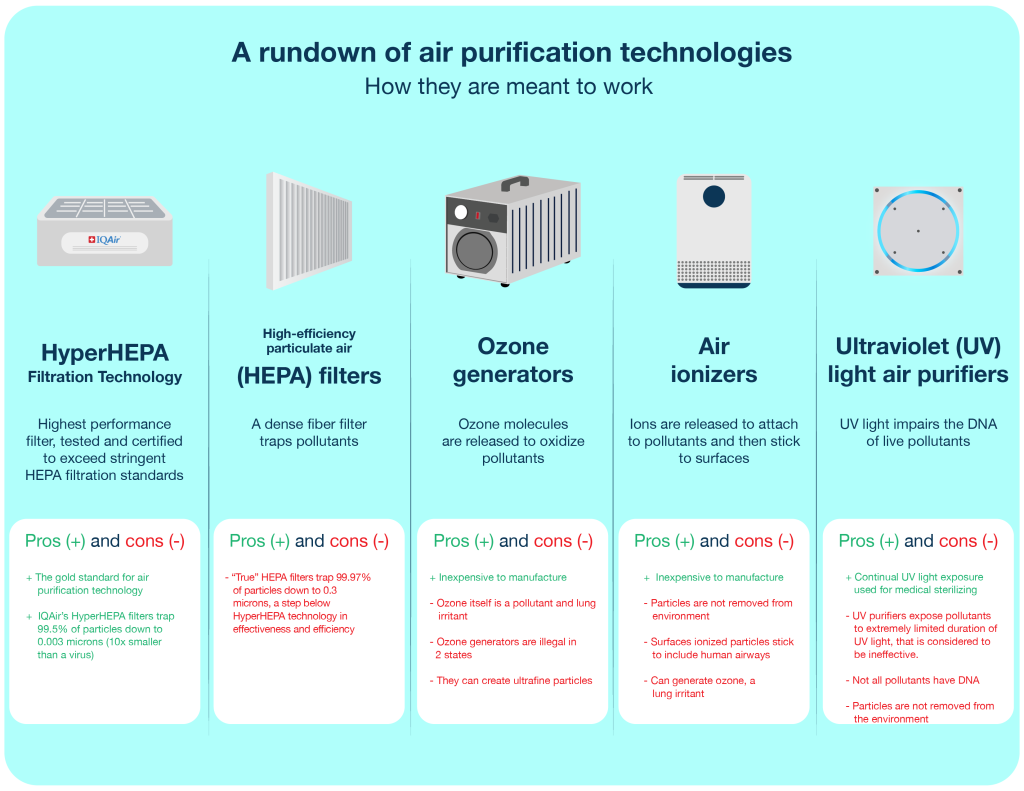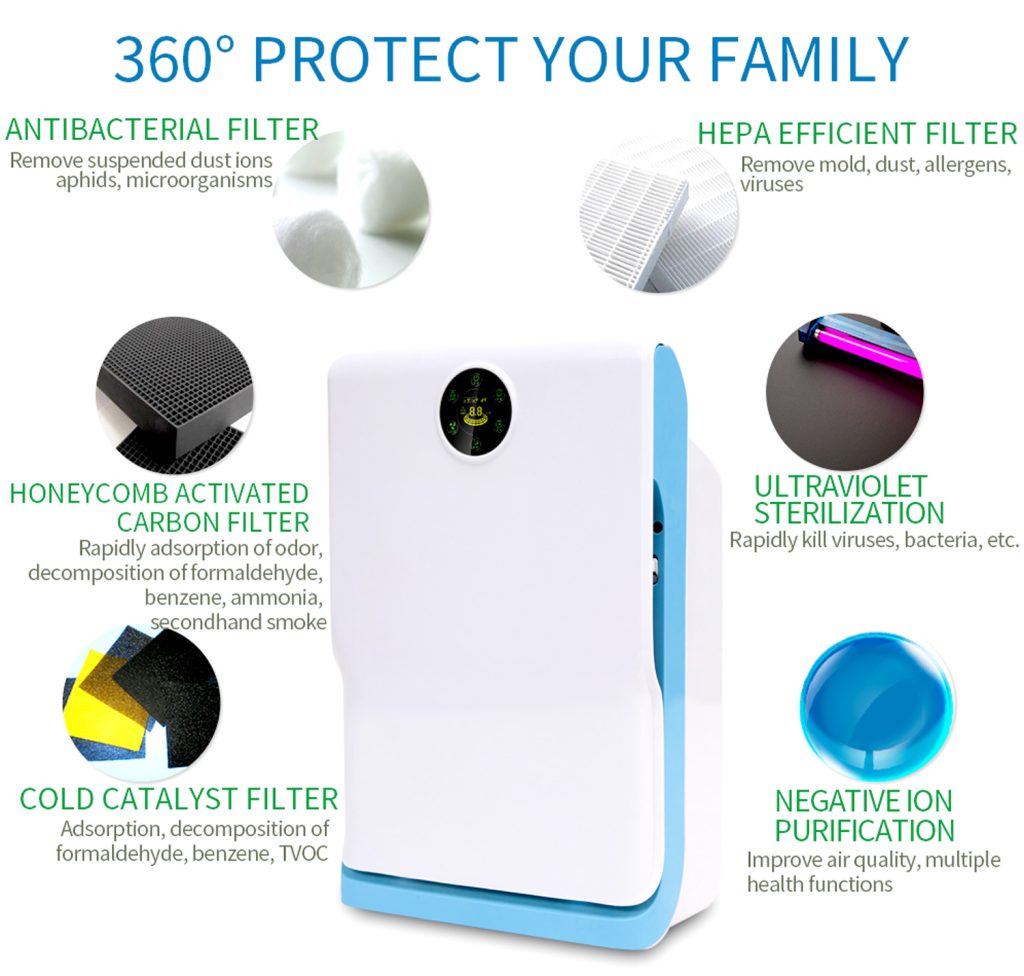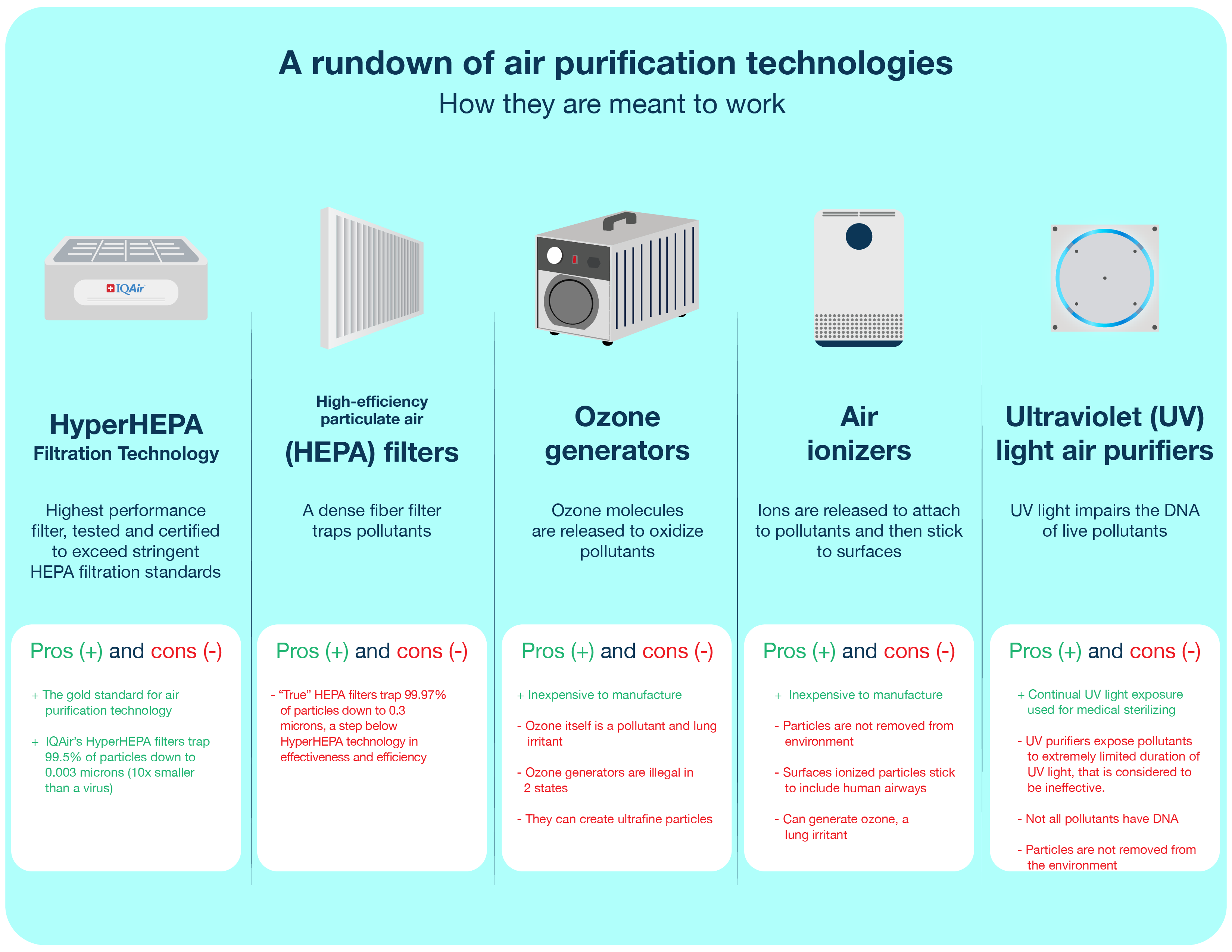You might have been concerned about the potential health concerns of utilizing an air purifier if you’ve ever thought about doing so to enhance the air quality in your house. We will examine, are there any health risks associated with using an air purifier in this post, giving you the knowledge you need to make an educated choice for the welfare of you and your family. So let’s find out whether there are any potential negatives to think about before you buy an air purifier.
Introduction
You may have thought about buying an air purifier if you’re worried about the quality of the air you breathe. These gadgets are made to clean up toxins and enhance the air quality in your house or place of business. However, you might be wondering whether utilizing an air purifier poses any health hazards. This extensive study will examine the many kinds of air purifiers, their advantages, potential health hazards, and safety measures you may take when using them.
Understanding Air Purifiers
What is an air purifier?
An air purifier is a tool that assists in removing allergies, poisons, particulates, and other impurities from the air. It functions by filtering the air that passes through it, holding onto contaminants for a while, then releasing cleaner air back into the environment. In particular for people who have allergies, asthma, or other respiratory disorders, air purifiers are frequently used to enhance indoor air quality.
How do air purifiers work?
Depending on the model you choose, air purifiers use several methods to purify the air. Typical techniques include:
- High-Efficiency Particulate Air (HEPA) purifiers: HEPA filters capture particles as small as 0.3 micrometers, effectively removing dust, pollen, pet dander, and other allergens from the air.
- Ionizer purifiers: Ionizers release negatively charged ions into the air, which attach to positively charged particles. This causes the pollutants to clump together, making them easier to capture.
- Activated carbon purifiers: Activated carbon filters use a process called adsorption to remove chemical pollutants and odors from the air.
- UV germicidal irradiation purifiers: These purifiers use ultraviolet light to neutralize bacteria, viruses, and other microorganisms present in the air.
- Ozone generators: Ozone generators produce ozone, a gas that can oxidize and neutralize odors and some pollutants. However, caution must be taken with these devices, as ozone can be harmful in high concentrations.

Types of Air Purifiers
High-Efficiency Particulate Air (HEPA) purifiers
One of the most well-liked and efficient categories of air purifiers available is the HEPA model. To capture pollutants like smoke, pollen, pet dander, and dust, they use a dense, fibrous filter. Up to 99.97% of airborne particles that are 0.3 micrometers in size or larger are known to be removed by HEPA filters.
Ionizer purifiers
In order to remove positive charges from airborne particles, ionizer purifiers release negatively charged ions into the atmosphere. As a result of this process, the contaminants gather together and are heavier, making them easier for filters to catch or for surfaces to collect. Ionizers can function alone or be built into other kinds of air purifiers.
Activated carbon purifiers
In order to absorb and eliminate chemical pollutants, smells, and volatile organic compounds (VOCs) from the air, activated carbon purifiers use activated carbon filters. These filters are excellent in capturing gases and odorous compounds because of their huge surface area.
UV germicidal irradiation purifiers
UV germicidal irradiation purifiers eliminate bacteria, viruses, and other microbes that could be in the air by using ultraviolet (UV) light. Neutralizing microorganisms that might cause respiratory diseases and other health issues is a specialty of this technique.
Ozone generators
Ozone gas is created by ozone generators and is used to remove various airborne contaminants and odors. However, exposure to high ozone levels over an extended period of time can be dangerous and lead to respiratory problems. Ozone generators should be used carefully and in line with the manufacturer’s recommendations.
Benefits of Using an Air Purifier
Improved air quality
The improvement in air quality is one of the key advantages of using an air purifier. Air purifiers contribute to the creation of a cleaner and healthier interior environment by eliminating pollutants including dust, pollen, pet dander, and smoke particles. People with allergies, asthma, and other respiratory disorders may benefit from this.
Reduction in allergens
Air purifiers are quite successful at lowering the amount of allergens in the air, especially those with HEPA filters. These filters can eliminate typical allergens like pet dander, pollen, and dust mite stings, bringing relief to those who suffer from allergic responses.
Removal of airborne bacteria and viruses
There are several air purifiers that can aid in the eradication of airborne bacteria, viruses, and other microbes, such as those that employ UV germicidal irradiation technology. This can be especially helpful for people with compromised immune systems or in environments where there is a higher risk of infection.
Elimination of pet dander and odors
If you own pets, you are probably familiar with the difficulties in controlling pet odors and dander. Pet odors and dander can be successfully captured by air purifiers, improving the comfort and invitingness of your house for you and your furry pets.

Potential Health Risks
Ozone generation and respiratory issues
Ozone gas can be created as a byproduct of some air cleaners, especially ozone generators. Ozone exposure can be dangerous and may result in respiratory problems as well as other health problems. Long-term ozone exposure can irritate the lungs, exacerbate respiratory diseases already present, and even cause lung damage.
Neglecting proper maintenance and filter replacement
The improper maintenance and filter replacement of air purifiers is one potential health danger. Air purifier filters have a tendency to clog up with collected particles over time and lose effectiveness. If filters are not cleaned and replaced on a regular basis, air purifier efficiency may suffer and contained pollutants may be released back into the atmosphere.
Misuse of air purifiers
Using air purifiers improperly might be harmful to your health. Inadequate air purification and potential respiratory issues might result from using the wrong kind of air purifier for a given requirement, relying primarily on air purifiers to improve indoor air quality, and skipping necessary ventilation.
Ozone Generation and Respiratory Issues
Understanding ozone generation
A colorless gas made up of three oxygen atoms is called ozone. Ozone is a naturally occurring substance in the upper atmosphere of the Earth and helps to protect against UV radiation from the sun, but when it is present at ground level, it can be dangerous. Ozone is created by some air purifiers, especially ozone generators, to neutralize odors and some pollutants.
Potential health effects of ozone exposure
Ozone exposure at high concentrations can cause throat discomfort, chest pain, coughing, respiratory irritation, and shortness of breath. People who already have respiratory diseases like asthma or chronic obstructive pulmonary disease (COPD) are more at risk of experiencing negative consequences from ozone exposure. To reduce the risk of ozone-related health problems, ozone generators should only be used in vacant locations and in line with the manufacturer’s instructions.
Choosing ozone-free air purifiers
It is best to select air purifiers that don’t generate ozone in order to avoid any potential health problems. If you’re buying an air purifier, seek for ones that are marked “ozone-free” or “no ozone emission.” This will make sure you can benefit from air filtration without being exposed to possibly hazardous ozone gas levels.

Neglecting Proper Maintenance and Filter Replacement
Importance of regular maintenance
Regular air purifier maintenance is necessary to guarantee optimum performance and safe use. This entails cleaning the device’s exterior and clearing away any accumulated dust or debris, as well as cleaning or replacing filters as the manufacturer advises. You may avoid the growth of bacteria or mold and maintain the air purifier’s efficacy by keeping it well-maintained.
Possible health risks of ignoring maintenance
Your air purifier needs to be maintained properly or there are a number of health dangers. Pollutants may not be efficiently captured by a filthy or clogged filter, allowing them to circulate in the air. A neglected air purifier may also turn into a haven for mold or germs, resulting in poor indoor air quality and potential respiratory problems.
Best practices for filter replacement
The manufacturer’s instructions should be followed when changing filters. The filters need to be replaced normally every six to twelve months, though the frequency may vary based on the model and usage. Check the filters frequently for obvious debris or damage, and replace them right away if necessary. You can keep your air purifier effective and secure by following the right procedures for filter change.
Misuse of Air Purifiers
Using the wrong type of air purifier for specific needs
It’s crucial to select the proper kind of air purifier for your unique requirements. Various air purifiers are made to target specific contaminants. For instance, a HEPA purifier would work best if your main worry is allergens like pollen or pet dander. If the wrong air purifier is used, the air may not be enough purified, exposing you to pollutants that are not sufficiently collected.
Over reliance on air purifiers for indoor air quality
While air purifiers can help to improve the quality of the air, they shouldn’t be the only way to keep clean indoor air. In order to remove stale air and replace it with fresh air from the outside, proper ventilation is essential. Additionally, routine cleaning procedures like vacuuming and dusting can improve the quality of the air inside a home. For best results, it’s crucial to combine the usage of air purifiers with other preventive measures.
Lack of ventilation and fresh air intake
In areas with sufficient ventilation and access to fresh air, air purifiers perform at their best. An air purifier’s effectiveness could be harmed by improper airflow. Make sure that the area where you live or work has enough ventilation, whether it comes from open windows, air vents, or mechanical systems. Air will circulate more easily as a result, improving air purifier performance.

Precautions and Safety Measures
Choosing certified air purifiers
When buying an air purifier, seek for models that have received certification from respected agencies, including the California Air Resources Board (CARB) or the Association of Home Appliance Manufacturers (AHAM). These certifications guarantee that the air purifier satisfies strict performance and security requirements. Reading customer testimonials and investigating the brand’s reputation can also provide light on a product’s dependability and quality.
Using air purifiers inappropriately
It is essential to use air purifiers as directed by the manufacturer. Observe the suggested installation recommendations and any particular maintenance or operation instructions. Misuse of air purifiers, such as operating them in larger spaces than necessary or leaving them on nonstop, might potentially impair their effectiveness and raise health hazards.
Maintaining proper ventilation
As was already said, maintaining adequate ventilation is crucial for the best air filtration. Make sure there is adequate ventilation in your home or office, and think about opening windows frequently to let in fresh air. Aside from that, keep in mind that using air purifiers in extremely moist or humid conditions can encourage the development of mold and germs.
Following manufacturer’s instructions
Always read and abide by the directions provided by the manufacturer for your specific air purifier type. This will offer instructions for setup, use, upkeep, and safety measures. Manufacturers include usage instructions with their air purifier designs, and straying from them may jeopardize the device’s efficiency and safety.
Conclusion (Are There Any Health Risks Associated With Using An Air Purifier)
In order to enhance indoor air quality and lessen exposure to allergies, pollutants, and odors, air purifiers can be useful instruments. Even while some types of air purifiers may pose health hazards, by exercising caution and following recommended usage guidelines, these risks can be reduced. Choose the best sort of air purifier for your unique requirements, give it regular maintenance, and make sure your home or office has adequate ventilation. You may take advantage of the advantages of cleaner, fresher air without endangering your health by adhering to these recommendations and developing healthy indoor air practices.
Recommendations: Afloia Air Purifiers

